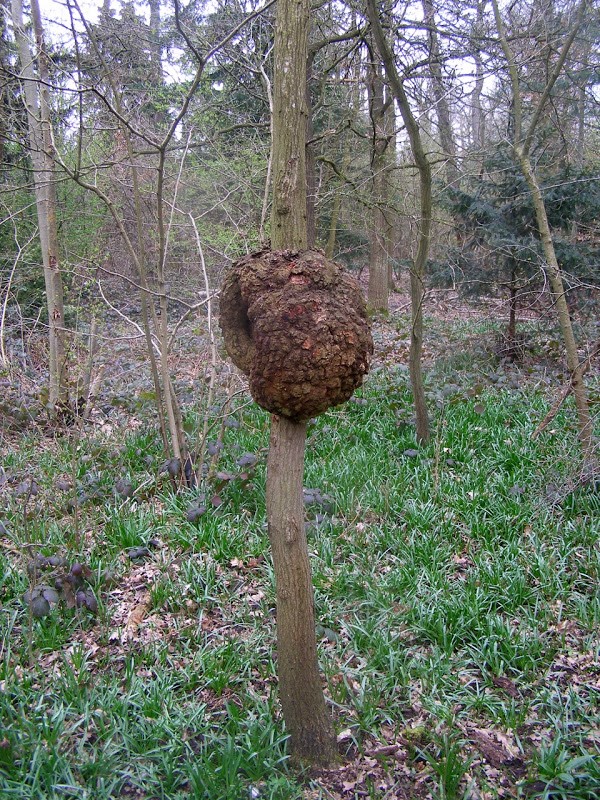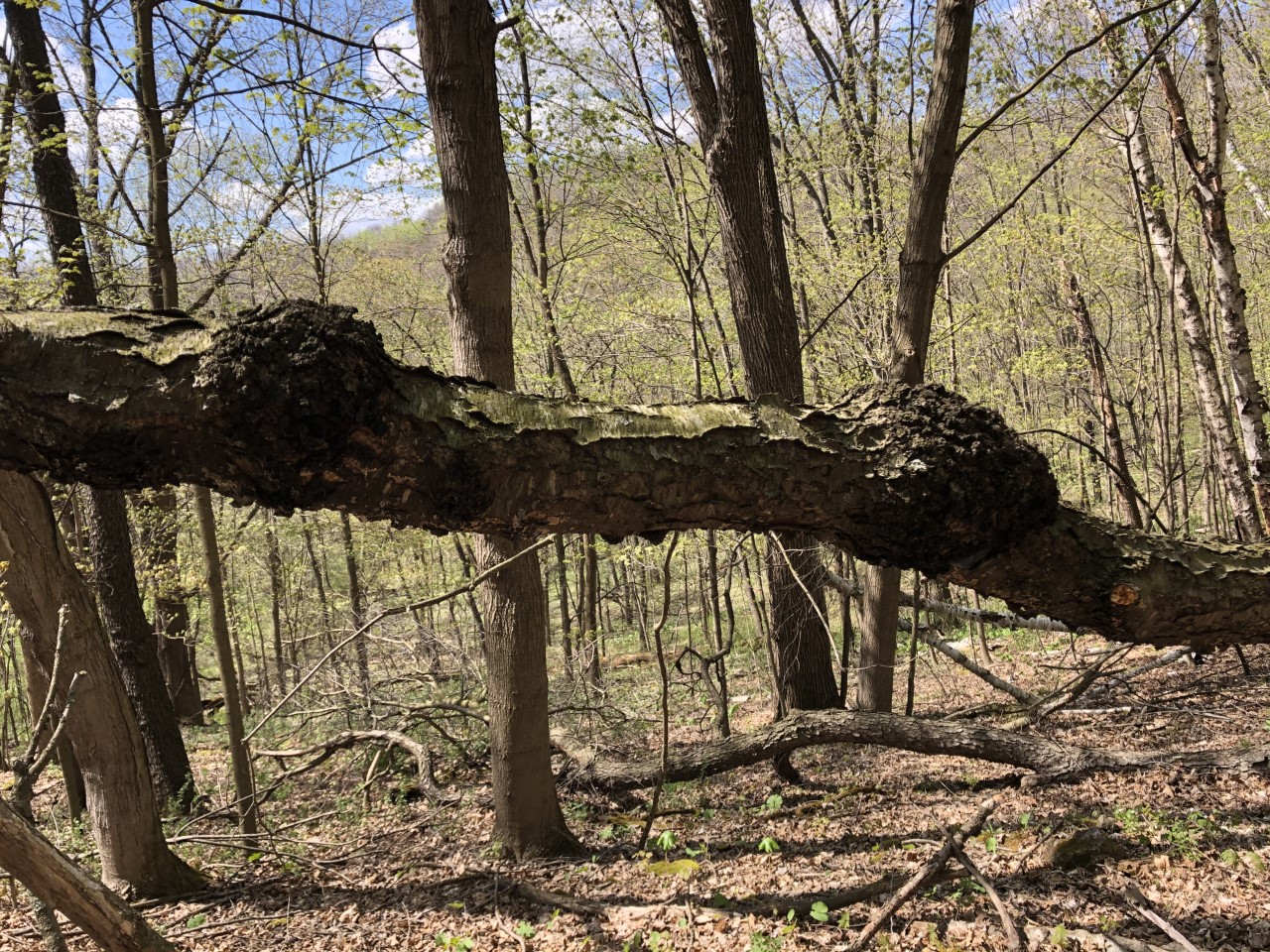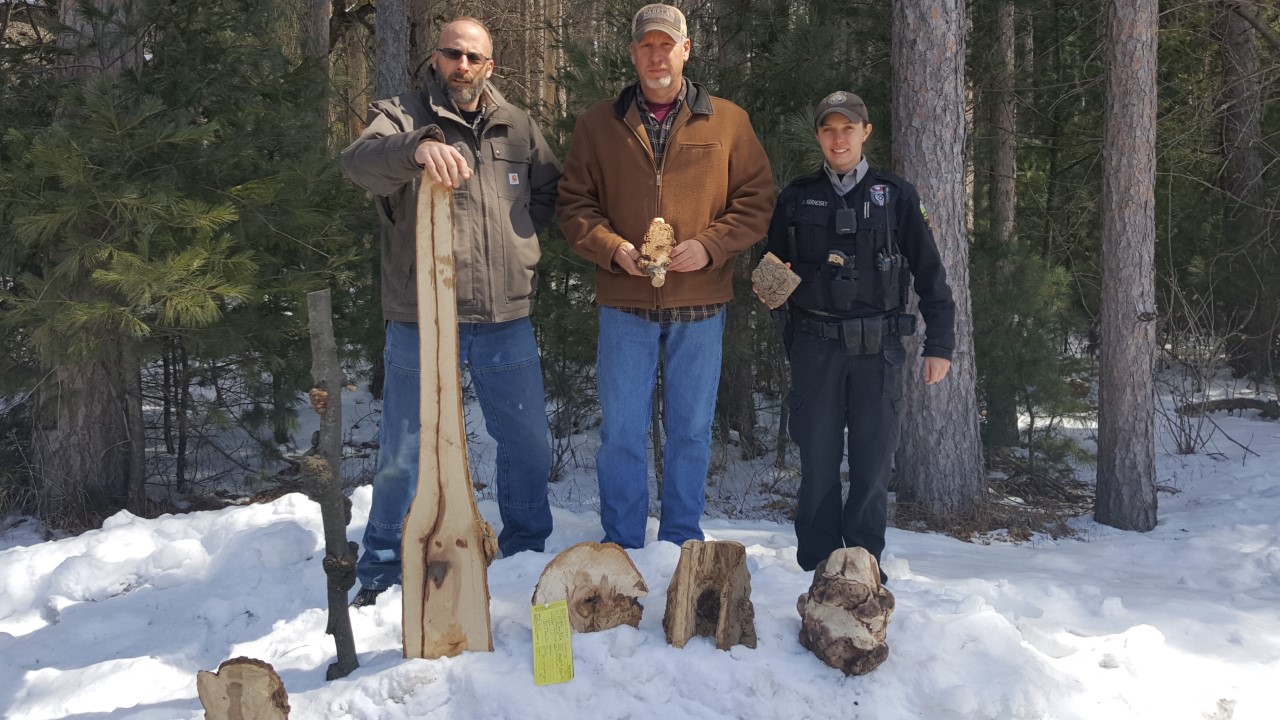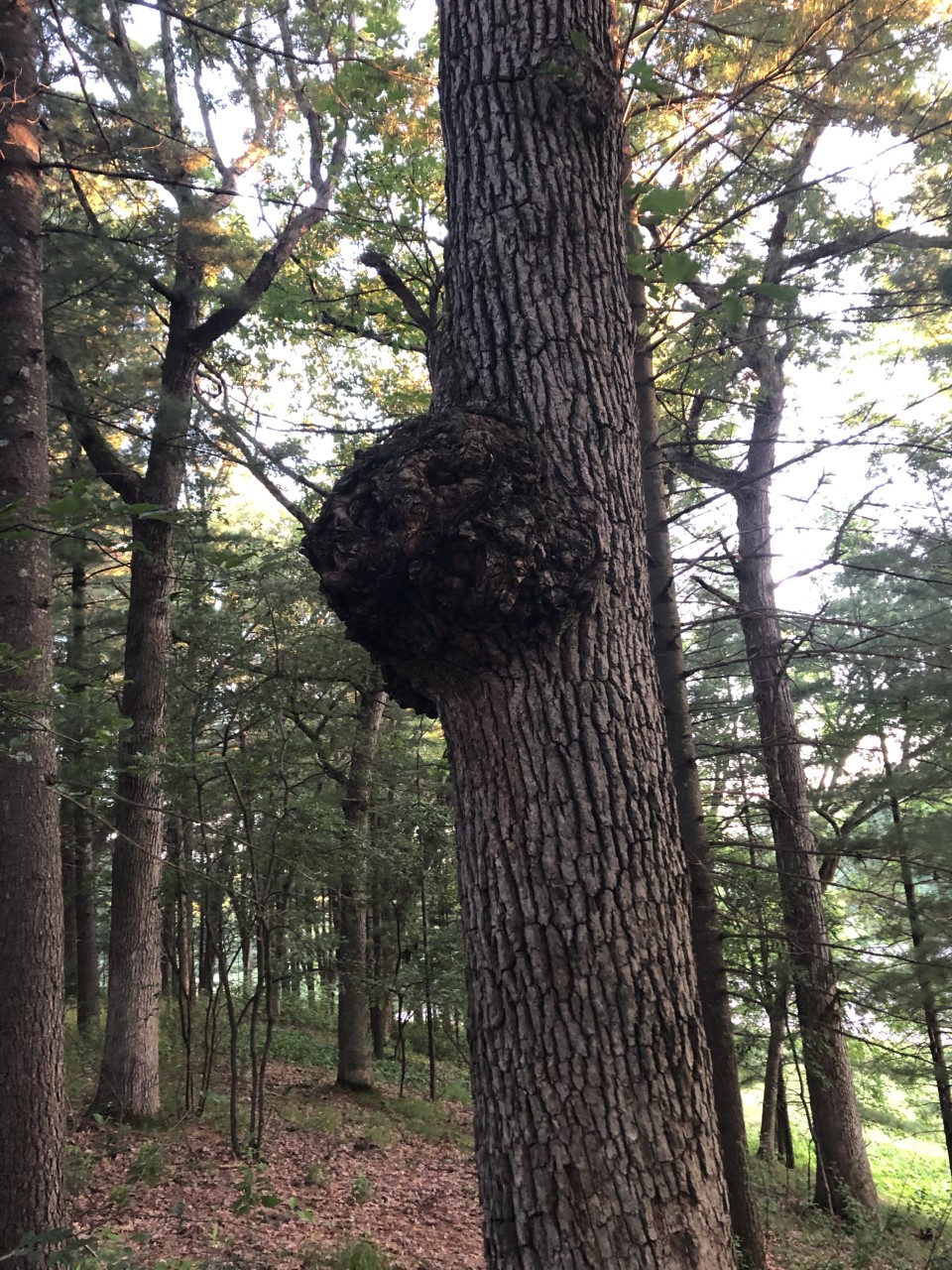
Thievery has its tools of the trade. Muggers wield handguns; burglars, glass-cutters; and cattle rustlers, wire-cutters.
And timber thieves? Chainsaws, of course.
Big-time timber thieves—those who rustle lodgepole pines, or oak or maple saw-logs—also require a serious truck to haul their bounty. It’s not uncommon for unscrupulous loggers to write landowners a check for seven loads of pulpwood when they actually got paid for 10 loads by a mill. Another ploy is to top-load their trailer with prime hardwood, unload those pricey logs elsewhere, and then deliver the main load to the pulp mill or sawmill.
Still other logger-thieves poach premier trees just beyond the property boundary they’re logging; or they remove prime walnut, hickory, or black-cherry trees when their contract restricts them to oak.
Then again, sometimes the landowner simply can’t control himself when the price is right. Ben Baumgart, a forester with the Wisconsin Department of Natural Resources, recalls a landowner who sold a parcel of land but retained the rights to cut 200 trees over the next eight years. The man cut a few trees the next two years, but seldom touched his chainsaw again until the oak market suddenly sizzled just before his logging rights expired. The seller then grabbed his gear and went to work.
Unfortunately for him, the buyer noticed the sudden logging activity on the parcel and started counting stumps. He notified authorities after his stump count passed the 200 threshold. Investigators arrived, spray-painted and documented each stump, and counted 468 freshly cut stumps. A judge ordered the seller to pay over $200,000 in fines and restitution.
Subtle Larceny
Boutique timber thieves, however, commit their larceny with shears, handsaws, or chainsaws, depending on their target, and often haul their loads homeward with little more than a backpack, plastic sled, and hatchback. When poaching burls, birch, and balsam boughs, there must be 50 ways to steal your neighbor’s wood.
Pause. What’s a burl? Picture a tree with a giant wart. Foresters describe burls as big, fungus-fueled cankers that infect trees above or below ground. When infecting an oak, maple, spruce, black cherry, or box elder tree, burls can grow bigger than a basketball, surround the trunk or branch like a half-barrel, raise a vertical razorback up its side, or glob on like a string of horse apples. In fact, thieves have chainsawed burls the size of carports from the base of California redwoods.
But, unlike warts, boils, or horse dung, burls are beautiful inside their rough-barked exteriors. Depending on their size and the tree species, raw burls sell online for $15 to $1,500 and more. Their interiors’ intricate grains, undulating shapes, and vibrant colors can render rare veneers for pricey cabinets. Mostly, though, burls intrigue woodworkers, who slice large specimens into slabs for decorative tables, countertops and fireplace mantles; or turners who bolt smaller burls onto lathes to create bowls, knife handles, and coffee table legs.
Given such prices, burls’ manageable size, and the difficulty of tracking their origins, they are convenient quarry for savvy forestry product poachers. Baumgart, however, never gave much thought to the burl trade until an agitated landowner cornered him at a birthday party in the winter of 2018.
In Wisconsin, DNR employees expect to see pictures of big bucks or monster muskies when people pull out their smartphones. This man, however, flipped through photos showing trees with large wounds cut into their trunks or branches.
Baumgartner was intrigued, and contacted conservation wardens Ted Dremel and Kaitlin Kernosky. Soon after, they accompanied the landowner to inspect his 40-acre woods and its chainsaw-damaged trees. They concluded the cuts were deep enough to weaken the trees and kill them, or make them snap and break in strong winds. The group spread out and identified 10 trees with chainsaw wounds, which the wardens measured, photographed, and identified by species and GPS coordinates.
The landowner operates a dairy farm, and wasn’t worried about lost income from the theft. Dremel said the man was just angry that someone trespassed and damaged so many trees.
“He said he probably would have let the thieves cut the burls if they had just talked to him and worked something out,” Dremel said. “In fact, after the case was decided in court, we brought back all the burls they’d stolen from him. The farmer said he’d probably just burn them in his outdoor wood-burner.”
Finding Thieves
The wardens estimated the thieves cut 25 burls from the landowner’s maples, ironwood, and bitternut hickories. “They cut halfway into the trees, and sometimes made cuts several feet long to get the entire burl,” Baumgart said.
After leaving the woods and returning to her office that day, Kernosky scoured the web for local sources where woodworkers could buy burls. She was shocked to find a seller on Craigslist who lived within a short hike of the victim’s woodlot. They were neighbors, in fact.
Dremel emailed the sellers to confirm they had a variety of burls, and scheduled a visit to start a sting operation. He posed as a builder and Baumgart played the role of a craftsman who turns wooden bowls. It’s often difficult to match burls to specific trees once they’re cut into slabs or trimmed for turning, but Dremel and Baumgart studied the landowner’s wounded-tree photos once more before knocking on the seller’s door.
While inspecting the seller’s burls and buying a couple of them, Dremel and Baumgart recognized two burls matching the cuts in their photos. One burl, in particular, caught their attention. The skinny specimen measured about 5 feet high and 10 inches wide. “That one was the key to the lock, the last piece in the puzzle,” Baumgart said.
Dremel and Baumgart then left the sellers’ home, and notified Kernosky and conservation warden John Schreiber what they’d found. Minutes later, Kernosky and Schreiber visited the home to question the woman, who first said she and her husband hadn’t been on that particular neighbor’s property. She said they had cut the burls from another neighbor’s woodlot where they had permission to walk their dogs and cut wood. She also claimed they cut most of the burls from a relative’s woodlot about 25 miles away.
The wardens asked her to call her husband and tell him to come home for questioning. Eventually they confessed that the husband used his chainsaw to cut the burls from the trees, and the wife helped him carry the wood home with a sled and backpacks.
Dremel said the couple was artistic and planned to fashion some burls into bowls and taxidermy backdrops. “I think they enjoyed the work and they had the talent, but they were just trying to make a quick buck off their neighbor,” he said.
In summer 2018, the couple accepted a plea deal in which the wife was found guilty of trespassing and the husband of theft, trespassing, and possession of stolen property. He was fined $267.50 and ordered to pay the landowner $400 in restitution.
Plague of Poachers
Dremel said thefts and fraud involving burls are fairly uncommon, given burls’ relative scarcity and the fact few people have the tools and skills to convert the unique growths into art. But thefts of other everyday forest products for decorative crafts can plague regions rich in birch, pine, and balsam. One of Dremel’s colleagues, Warden Dan Michels, works in the vast forests of northwestern Wisconsin just south of Lake Superior.
“The driving force is a buyer paying cash money,” Michels said. “I haven’t worked a burl case in my area, but that would change if someone started buying burls.”
In contrast, if you Google “birch poles,” “birch crafts,” “balsam boughs,” or “balsam garlands,” you’ll see what Michels faces.
He said individual crafters and hobbyists seldom abuse the resources while collecting birch twigs, spruce cones, pine cones, sphagnum moss, cedar boughs, and white-pine boughs for wreaths and other home projects. Profit-driven poachers are another story. Vast boreal forests from Minnesota to Maine are the thieves’ oysters, and they open them quietly with shears, snippers, and handsaws. The Upper Great Lakes states alone offer millions of acres for plunder, whether it’s private lands, industrial forests, or publicly-owned state, county, and national forests.
And even if a poacher fires up a chainsaw to harvest birch poles for a suburbanite’s fireplace, black-spruce tops for miniature Christmas trees, or post-size cedar trunks sliced into decorative centerpieces, who would worry? Whining two-stroke engines blend into Northwoods landscape like loon trills on lakes and air brakes on logging trucks.
Poaching Season
Poachers start hopscotching Northern forests after two hard frosts in fall, and stop cutting after birch sap flows in spring. In between, conservation wardens rely on backwoods hunters, loggers, and ice fishermen for tips about thieves slashing and slicing an area. But by the time wardens investigate and place trail cameras to catch them, the poachers are already scouting their next source.
After hauling out each harvest, often in darkness, the thieves drive to warehouse doors and loading docks during normal business hours to unload and get paid. Their cars, pickups, hatchbacks, and utility trailers often bristle in all directions with balsam boughs, spruce tops, birch bark, birch poles, willow whips, woodland mosses, or anything else they can sell.
The buyers, meanwhile, feel caught in the middle. They obtain much of their raw materials from solid folks earning extra income, but concede much arriving cargo also comes from less pure sources. Crafts-based companies rely on the honor system, and law-enforcement agencies lack the staff, time, and budgets to verify the origins of every load hauled in.
“Buyers put out the word on what they need, and the word spreads fast,” Michels said. “It seems like we deal with the same people over and over again. A lot of them are habitual drug users who need cash for their next fix. They’re meth users and repeat violators. A lot of them are on a payment plan with the court system.”
Sportsmen can help catch burl poachers by reporting suspicious activity and keeping a mental log of people and vehicles they encounter in the woods. The slightest detail might be what helps wardens close an open case.
Michels said poachers often get the necessary harvest permits from the county, state, or U.S. Forest Service, but stray beyond those lands regularly when “working.”
Abusing Permits
“Every office or agency issues harvest permits, but permits get abused when no one is looking,” Michels said. “They do a lot of their work at night and on private lands, and they’re seldom on a main road. They work off the beaten paths. They’ll park along a logging road and walk a half-mile through the forest or go the opposite direction to throw you off.
“They often cut a load, stash it somewhere, and come back for it later,” Michels continued. “We get tips from hunters or landowners who get pictures of them or their vehicles on a trail camera, and from bear houndsmen out in the hinterlands at midnight tracking down a dog. It’s an ever-evolving challenge. We keep our eyes open everywhere we go, but they don’t make it easy. If they’re using a cargo van, we have no idea what they’re hiding inside.”
And when all else fails, some thieves revert to an old reliable: firewood. Michels said most firewood heists are simple stop-and-snatch jobs for the thief’s own use, but some cases go beyond crimes of convenience.
“We had a firewood cutter a few years ago who was advertising their prices, and then stealing trees to make the firewood,” Michels said. “They’d get salvage permits to harvest firewood for personal use from windfalls on public lands or [tax-deferred] private lands, and then abuse it. They’d go out on Sunday mornings when they thought no one was around to catch them. We made the case when one of our wardens went out and matched stumps to firewood they were selling.”
Baumgart said one of the bigger frustrations of timber thefts of any size is that many people, even court judges, don’t take such crimes seriously.
“Courts tend not to put timber thefts in the same league as stealing known quantities like someone’s car or even a TV,” Baumgart said. “To them it’s just wood. But the volumes we’re talking about in most timber thefts go way beyond the worth of a TV or used car. One load of hardwood logs can be worth well over several thousand dollars. Plus, you can always buy another car. It takes 80 to 100 years to grow a valuable saw log.”
Images via Wisconsin DNR.









